Most cars from leading manufacturers come with DTC. Among those that have it are BMW cars. This article will discuss DTC BMW’s meaning and other related topics.
Dynamic Traction Control (DTC) is part of the Dynamic Stability Control system. As a safety mechanism, its main function is to control the stability and traction of a vehicle, giving way to sports-style driving dynamics. This makes it easier for drivers to control drift and make tighter turns whenever necessary.
Read on to learn more about the DTC light in a BMW, including what it does and when you should or shouldn’t use it.
What Does DTC Light Mean on a BMW?
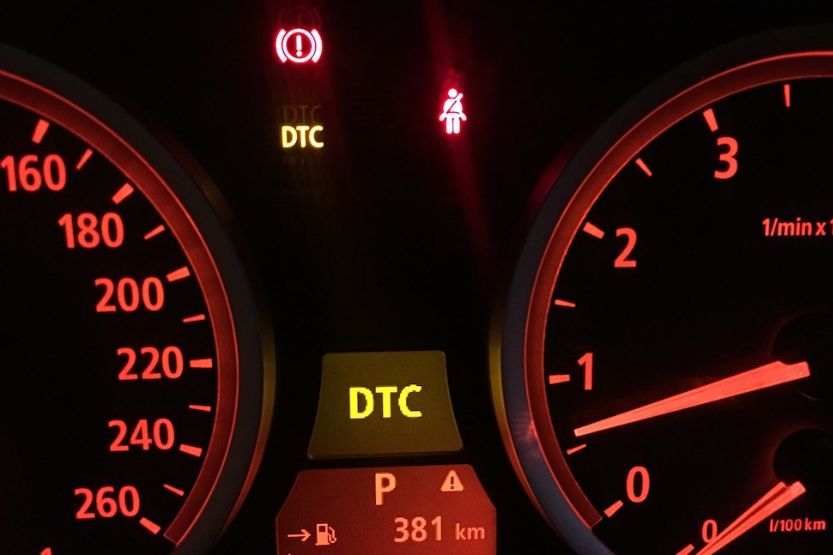
A Safety Feature in Many BMW Cars
Dynamic traction control (DTC) is a safety feature in many BMW cars and other cars in the same category. If you press the DTC BMW warning light button for a few seconds, the acronym “DTC” appears on your dashboard to activate traction control.
Good Traction Give You Full Control of Your Car to Avoid Accidents
Maintaining good traction is important to give you full control of your car to avoid accidents, especially when traveling on slippery or unfamiliar roads.
According to the statistics by the U.S. Department of Transportation’s Federal Highway Administration, around 4,900 deadly car crashes happen on slippery roads in the U.S. yearly.
Present in All 2020, 2021, and 2022 BMW Models
Traction control has been a standard feature in many cars in the U.S. since 2012. This feature is present in all 2020, 2021, and 2022 BMW models with the xDrive system, a higher version of an all-wheel-drive system.
BMW Cars with a Standard xDrive System and DTC
Examples of BMW cars with a standard xDrive system and DTC are:
- i8
- M5
- M8
- X4
- X7
- X3 M
- X4 M
- X5 M
- X6 M
How Does the Traction Control System or DTC Work
The concept of the traction control system or DTC is relatively simple. Let’s briefly go over how it works:
Yaw-rate Sensor or Rotational Speed Sensor in Four Tires
A car with a traction control system has a yaw-rate sensor or rotational speed sensor in its four tires. Yaw refers to the shift of the weight of a car from the left or to the right, and vice versa.
Yaw-rate Sensor Determines How Far a Car “Tilts”
Therefore, a yaw-rate sensor determines how far a car “tilts” in turn while continuously measuring the rotation speed of each wheel.
Collected Information Is Sent to a Control Unit
The yaw-rate sensors send the collected information to a control unit for processing. If the wheels are spinning too fast, the system recognizes that the car is starting to lose traction—which could lead to slipping or skidding.
Activated Dynamic Traction Control System
This activates the dynamic traction control system to prevent either of the two from happening. You’ll know when it kicks in because your car will usually jerk a little.
Traction Control System Curbs Engine Output
Once the traction control system is active, it immediately curbs engine output. This action minimizes the slip on the wheels, making it easier for the car to maintain good contact with the road to avoid spinning out of control.
ABS Helps by Preventing the Wheels from Locking Up During Braking
However, DTC isn’t the only system working to stop cars from skidding or hydroplaning. The anti-lock braking system (ABS) also helps by preventing the wheels from locking up during braking. Therefore, the driver can maintain more control over the car and steer to safety.
What’s the Difference Between DTC and DSC?
BMW Introduced Its Dynamic Stability Control (DSC) System in 1997
In the U.S., stability control has been a mandatory feature in all cars since 2012. On the other hand, BMW first introduced its Dynamic Stability Control (DSC) system in 1997. They offered it on the BMW 740i/L and 750i/L. Today, the DSC III is a standard feature in all BMW models.
DSC Works Together with BMW’s Other Suspension Control Systems
DSC works together with other suspension control systems of BMW, such as:
- Automatic Stability Control + Traction (ASC + T)
- Cornering Brake Control (CBC), and
- Anti-lock Brake System (ABS).
This complex system regularly monitors the following:
- Acceleration direction (lateral or transverse),
- The angle of steering,
- Brake pressure,
- Car speed,
- Rotation of wheels, and
- Yaw (shifting of car weight to the left or the right).
- This is to determine impending instability during cornering.
BMW DTC Button Controls Three Traction Control Settings
The BMW DTC button has control over three traction control settings, namely:
- Off
- DTC
- DSC (default setting)
DSC Is Always Active By Default
By default, DSC is always active. Regular drivers shouldn’t turn it off. But just in case you need to, press the DTC button once to deactivate the DSC system.
Press it again to activate it. If you hold the same button for around 4 seconds, you’ll deactivate both the DSC and DTC systems and allow drifting and wheel spin.
So, how are the two systems different?
DTC Is a Component of the Dynamic Stability Control (DSC) System
DTC is a component of the Dynamic Stability Control (DSC) system. They most certainly work together to prevent wheel slippage using the same wheel sensors.
DSC Intervenes by Reducing Engine Power
When car instability is detected, DSC typically intervenes by reducing engine power and independently applies brakes on each wheel as quickly as possible to keep you in control. In this mode, traction control works to the fullest extent possible.
DTC Gets the Job Done by Causing the DSC to Be Less Restrictive
Meanwhile, DTC gets the job done by causing the DSC to be less restrictive. It also allows small but efficient amounts of slip/wheel spin, which greatly helps when driving on more slippery surfaces.
Bottom line: DSC and DTC aren’t the same things. However, they do work together to give you a safe driving experience.
What’s the Difference Between DTC and ABS?
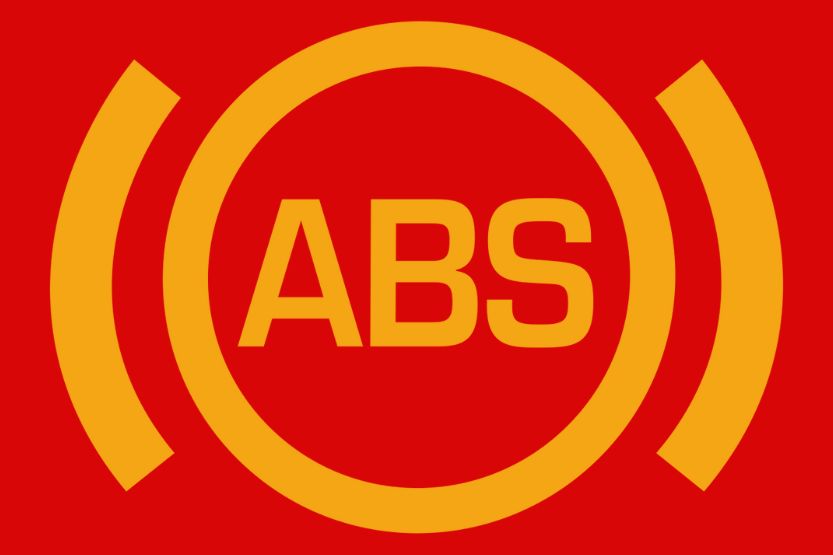
ABS’ Main Purpose Is to Stop the Wheels from Locking Up During a Hard Brake
ABS stands for the anti-lock braking system. The main purpose of this system is to stop the wheels on a car from locking up during a hard brake. It also allows the driver to maintain steering ability and stay on course while maximizing braking.
A Traction Control System’s Overall Purpose Is to Ensure That the Wheels Have the Most Traction
The overall purpose of a traction control system is to ensure that all four wheels always have the most traction. As a result, it stops the wheels from spinning while a car accelerates.
This usually happens when people drive in icy or rainy conditions, wherein wheels cannot produce sufficient traction to keep the car moving.
A Car’s Traction Control System Works Together with the Anti-locking Braking System
A traction control system often works together with the anti-locking braking system to stabilize the car. One of the most significant differences is when they stop the car from spinning.
Traction Control Prevents Wheels from Slipping While Driving
Once it identifies a wheel is starting to lose its grip on the road, a traction control system prevents wheels from slipping while the car is still accelerating. Meanwhile, an anti-lock braking system does this while braking.
Bottom line: Traction control systems, such as BMW’s DTC, works by applying brakes to a spinning wheel. On the contrary, an anti-locking braking system lets go of the brakes on a locked wheel while braking.
When Should You Use the BMW DTC?
DTC Mode Is Off by Default
Traction control should always be on when driving, even if the weather seems okay. On the latest models of BMW cars, the DTC mode is off by default and must be activated by the driver.
You’ll know if you’ve successfully activated it when an illuminated “DTC” icon appears on the dashboard.
Activating DTC Will Deactivate DSC
Please note that if you activate DTC, you’ll also deactivate Dynamic Stability Control (DSC). And it doesn’t mean that when you press the DTC button once, the traction control is off. The DTC mode’s purpose is to allow more wheel slip or slide.
Situations Wherein BMW DTC Is Beneficial
So, when should you use the BMW DTC? DTC can be beneficial in different situations:
- The road you’re driving is slippery because of foreign substances, such as ice, rain, snow, and wet leaves.
- You’re making a sharp turn during dangerous weather conditions or even on a regular, relatively safe road surface.
Best to Leave Your Traction Control On
The bottom line is it’s best to leave your traction control on, whether or not you’ll face hazardous road conditions. This could make a big difference between staying on course and avoiding crashing your car due to slipping or skidding.
Again, What does the DTC warning light on BMW mean? DTC or Dynamic Traction Control is a sub-function of Dynamic Stability Control that you can turn on or off. DTC is one of the stabilizing systems throughout the BMW models.
When to Turn Off DTC
Now, let’s talk about when you should turn off DTC.
Cases Wherein It Is Best to Turn Off DTC
There are a few instances wherein you wouldn’t want to use traction control because it could do more harm than good. These are examples of these instances:
- You’re driving up a steep hill that has a road or track with a rough or loose surface.
- You’re trying to get your car unstuck from the mud, sand, or snow.
DTC doesn’t offer much help during these situations because of different reasons. Let’s say your car is stuck in a deep mud hole.
Traction Control Slows Down the Spinning of Wheels
If you switch on traction control, it will slow down the spinning of your wheels. Remember, you need them to spin furiously to cut through the mud and reach the harder ground underneath to move on your way.
Undrivable Car
If traction control is active, the wheels will not spin that much or stop altogether. Another problem you’ll encounter is your car’s computer could reduce power from the engine to the wheels, rendering your car undrivable.
Consider Using Snow Tires to Prevent Your Car from Getting Stuck in Mud
Suggestion: Instead of solely depending on the traction control system, consider using snow tires or tire chains to prevent your car from getting stuck in mud, sand, or snow. And lastly, having the best traction control system is useless if you have poorly maintained tires and unsafe driving habits.
Does Traction Control Make a Car Faster?
The answer to this question is debatable. The purpose of a traction control system is indeed the same for most cars. However, car manufacturers have a different way of designing how their traction control system will work to fit their cars’ performance.
Some people mistakenly think that the added traction from any traction control system allows them to drive faster while keeping the wheels on the ground.
In most cases, this feature limits how quickly you can accelerate your car to keep you safe on the roads. So, any traction control device or system can hinder your performance if you’re into racing.
Any traction control system is specifically designed to limit the speed of a slipping wheel by reducing the engine power that goes to it. This reduced power output to the wheel is what slows down your car. It doesn’t make driving fun, but it does help you accelerate your car more controlled and slower.
So, you can only drive considerably faster if you turn off the traction control system on your car. But don’t do that unless you’re a highly-skilled driver. Traction control, like BMW’s DTC, is the safety net that allows you to drive confidently on any road or weather condition every time.
Does BMW DTC Use More Fuel?
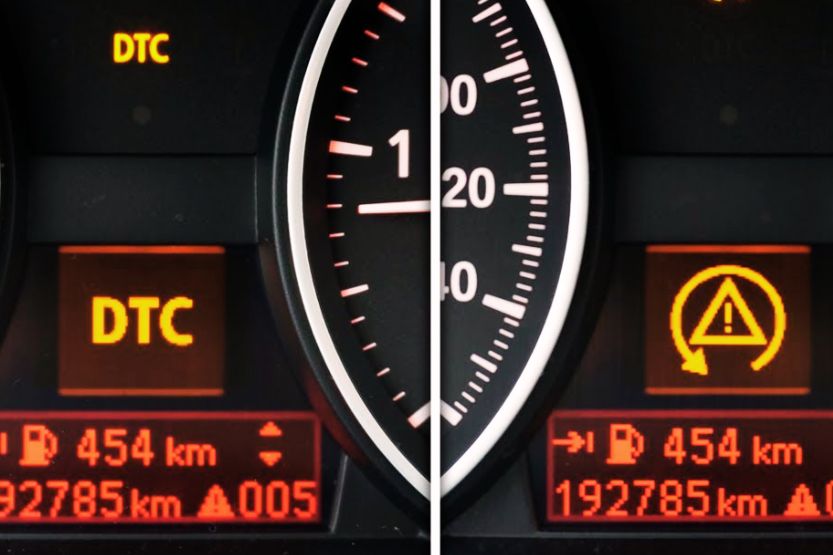
Factors That Affect a Car’s Fuel Efficiency
There’s a lot of confusion and different opinions on whether or not traction control systems use more fuel. Before diving into this topic, it’s important to note that many factors affect a car’s fuel efficiency, such as:
- Weather,
- Driving behavior, and
- Weight of your car.
No Evidence of Traction Control’s Effect on Gas Mileage
Many experts agree that leaving the traction control on or off doesn’t affect your gas mileage. Some people are convinced that it has helped improve their car’s fuel efficiency.
While these reports aren’t based on peer-reviewed, large-scale studies, there might be some truth. Most traction control systems, such as DTC, aren’t actively doing anything under normal driving conditions.
They only use fuel when a car is in danger of skidding or slipping. Therefore, they don’t contribute to high fuel consumption.
Is It Okay to Launch with the Traction Control Off?
If that’s the case, is it okay to launch with the traction control off?
Well, not really. First, it’s going to make driving more challenging and riskier. Second, launching your car without traction control can use more fuel, even if it’s just for a few seconds.
This is because your car will need to continuously stop your wheels from spinning, which drags on both power and gas mileage.
So, to sum it up, any traction control system usually doesn’t consume more fuel than any system or component on a car. That’s because it’s not actively doing anything most of the time. And if it does intervene, it shouldn’t cause a significant increase in fuel consumption.
Other Systems Might Be Causing the Increase in Fuel Usage
If you noticed there had been an increase in your car’s fuel usage, there might be other systems that are causing it. Consider taking your car to a trusted auto repair shop so that they can run the necessary diagnostic tests.
It’s also important to check your owner’s manual or ask questions to experts to know how traction control works and what type of performance issues you should expect.
How Much Does It Cost to Repair a BMW Traction Control System?
Signs of a Faulty or Damaged Traction Control System
If there are issues with your BMW traction control system, you’ll immediately know because the “DTC” icon will illuminate your dashboard. Other common signs of a faulty or damaged traction control system include:
- The check engine light can come on.
- Your car’s brakes are inconsistent.
- The DTC button will not depress.
Repair Cost Depends on Many Factors
It isn’t easy to pin the exact cost of repairing DTC because it depends on many factors, such as:
- BMW Model,
- Shop, and
- Parts.
For instance, if you have the latest BMW model, it’s usually made from more expensive materials and parts so that it could cost more to service.
Average Cost of Replacing a Traction Control Switch
According to the estimate of RepairPal, the average cost of replacing a traction control switch is between $99 and $111. Then, the cost for labor would range from $47 to $57, while the replacement parts would cost around $52.
Note: These prices are before taxes and fees. RepairPal did not consider the car model or location.
BMW 325i Traction Light Repair Costs
Now, let’s say you have a BMW 325i. Its traction light costs $95 for the inspection and another $95 for the labor fee. For other BMW models, such as the 2008 BMW 528xi, 2013 BMW 320i xDrive, and 2015 BMW 328d xDrive, the total cost could be around $60 (average dealer price).
Common Causes of a Faulty Traction Control System
To avoid expensive repairs and extend the life of your DTC, it’s a good idea to know what would cause it to stop working. These are just two of the common causes of a faulty traction control system:
1. Damaged Wheel Speed Sensors
These are constantly exposed to a harsh environment, such as dirt, snow, stones, tar, water, and more. So, they take a lot of beating and could eventually fail. The average price of a BMW wheel speed sensor replacement is $152 to $231. The labor costs are between $46 and $58.
2. Malfunctioning ABS
The anti-lock braking system (ABS) and traction control system often share the same control and diagnostic systems. That’s why if it’s not working properly due to damaged sensor wiring or dirt buildup, it could cause the traction control warning light to come on.
The average cost of an ABS control module replacement for a BMW 328i is $1,659 to $1,731, while the labor costs could be anywhere between $80 and $120.
Conclusion – What Is DTC in a BMW?
The BMW dynamic traction control (DTC) system could spell the difference between your safety and that of your loved ones.
It works closely with other traction and stability systems, like the dynamic stability control and anti-lock braking system, to ensure your car doesn’t skid or hydroplane on icy or slippery roads. What’s even better is it doesn’t significantly affect gas mileage.
Read next:

![Ford Sync Phone Button Not Working [Causes and How to Fix] Ford Sync Phone Button Not Working](https://roadsumo.com/wp-content/uploads/2022/03/Ford-Sync-phone-button-not-working-150x150.jpg)


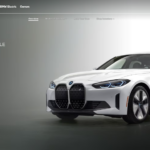
![DRL Warning Light [What Does It Mean, Causes, and How to Fix] what does the drl warning light mean](https://roadsumo.com/wp-content/uploads/2022/04/what-does-the-drl-warning-light-mean-150x150.jpg)
![Service Stability System [Causes and How to Fix this Warning Light] service stability system](https://roadsumo.com/wp-content/uploads/2022/04/service-stability-system-150x150.jpg)
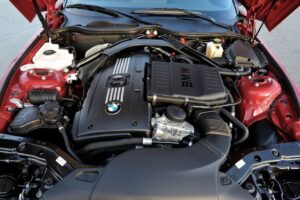

![Read more about the article BMW 135i Specs and Review [The Most Powerful 1-Series]](https://roadsumo.com/wp-content/uploads/2021/03/BMW-135i-300x200.jpg)